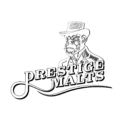Royal Lochnagar
Production:
Royal Lochnagar draws water from local sources for its production, and it has a small production capacity of 450,000 liters per year. Only five other distilleries in Scotland have smaller capacities than Royal Lochnagar.
Pot Stills:
The distillery operates with one wash still and one spirit still. The wash still has a capacity of 6,700 liters, while the spirit still has a capacity of 3,720 liters. Both stills have a traditional Speyside shape with a wide, spherical lid and a tall conical neck.
Maltings
Royal Lochnagar used to have its own malting floors but ceased their use in 1963 during a reconstruction and renovation. The distillery now sources its malt from Diageo’s central maltings. The malt used is unpeated, contributing to the smooth and sweet taste of the Single Malt.
Warehouse:
Royal Lochnagar has a unique feature—a duty paid warehouse. This is because the distillery is home to Diageo’s Malt Advocate Academy, where employees are trained on different types of Whisky. The distillery still fills its casks on-site, which is less common today. The warehouses are traditional dunnage warehouses with earthen floors, and a combination of Oak, Sherry, and Muscat casks is used.
History:
The founding of Royal Lochnagar was marked by challenges. The original distillery was burned down twice by competitors in 1826. In 1845, a new distillery called “New Lochnagar” was built on the shores of the River Dee and was granted a royal warrant by Queen Victoria in 1848. The distillery was subsequently renamed Royal Lochnagar in her honor. Queen Victoria often visited the distillery during her stays at nearby Balmoral Castle.
The distillery remained in the Begg family until 1916 when it was acquired by John Dewar and Sons. It later became part of DCL (Distillers Company Limited) in 1925, and in 1930, the administration of the site was transferred to Scottish Malt Distillers. After the merge of SMD and Diageo, Diageo became the owner of Royal Lochnagar.
Visitor’s Centre:
The visitor’s centre at Royal Lochnagar was built in 1930, making it one of the earliest in the country. It offers a gift shop, a small museum, and tours of the distillery facilities.
Visitor information:
Royal Lochnagar Distillery
Crathie, Ballater
Aberdeenshire
AB35 5TB
Balmoral
Tel: +44 (0)13397-422700
Email: royal.lochnagar@malts.com
Information about the Distillery: |
|
| Number of bottles: | 0 Bottles |
| Country, Region: | Scotland, Highlands |
| Coordinates: | -3.208852 57.030126 |
| Status: | Active |
| Still 1: | 1 x 6,700 l Normal |
| Still 2: | 1 x 3,720 l Normal |
| Fermenters: | 2 x 27,000 l |
| Mashtun: | 5 t |
| Founding year: | 1845 |
| Distillery output: | 450,000 l |
| Official Website: | https://www.malts.com/en-gb/distilleries/royal-lochnagar |
Production:
Royal Lochnagar draws water from local sources for its production, and it has a small production capacity of 450,000 liters per year. Only five other distilleries in Scotland have smaller capacities than Royal Lochnagar.
Pot Stills:
The distillery operates with one wash still and one spirit still. The wash still has a capacity of 6,700 liters, while the spirit still has a capacity of 3,720 liters. Both stills have a traditional Speyside shape with a wide, spherical lid and a tall conical neck.
Maltings
Royal Lochnagar used to have its own malting floors but ceased their use in 1963 during a reconstruction and renovation. The distillery now sources its malt from Diageo’s central maltings. The malt used is unpeated, contributing to the smooth and sweet taste of the Single Malt.
Warehouse:
Royal Lochnagar has a unique feature—a duty paid warehouse. This is because the distillery is home to Diageo’s Malt Advocate Academy, where employees are trained on different types of Whisky. The distillery still fills its casks on-site, which is less common today. The warehouses are traditional dunnage warehouses with earthen floors, and a combination of Oak, Sherry, and Muscat casks is used.
History:
The founding of Royal Lochnagar was marked by challenges. The original distillery was burned down twice by competitors in 1826. In 1845, a new distillery called “New Lochnagar” was built on the shores of the River Dee and was granted a royal warrant by Queen Victoria in 1848. The distillery was subsequently renamed Royal Lochnagar in her honor. Queen Victoria often visited the distillery during her stays at nearby Balmoral Castle.
The distillery remained in the Begg family until 1916 when it was acquired by John Dewar and Sons. It later became part of DCL (Distillers Company Limited) in 1925, and in 1930, the administration of the site was transferred to Scottish Malt Distillers. After the merge of SMD and Diageo, Diageo became the owner of Royal Lochnagar.
Visitor’s Centre:
The visitor’s centre at Royal Lochnagar was built in 1930, making it one of the earliest in the country. It offers a gift shop, a small museum, and tours of the distillery facilities.
Visitor information:
Royal Lochnagar Distillery
Crathie, Ballater
Aberdeenshire
AB35 5TB
Balmoral
Tel: +44 (0)13397-422700
Email: royal.lochnagar@malts.com
Information about the Distillery: |
|
| Number of bottles: | 0 Bottles |
| Country, Region: | Scotland, Highlands |
| Coordinates: | -3.208852 57.030126 |
| Status: | Active |
| Still 1: | 1 x 6,700 l Normal |
| Still 2: | 1 x 3,720 l Normal |
| Fermenters: | 2 x 27,000 l |
| Mashtun: | 5 t |
| Founding year: | 1845 |
| Distillery output: | 450,000 l |
| Official Website: | https://www.malts.com/en-gb/distilleries/royal-lochnagar |
